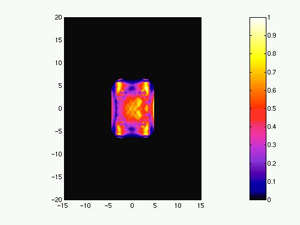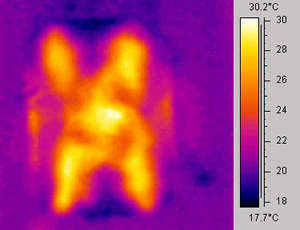A recent consumer report cited microwave ovens as being one of the most common electrical appliances in use today, despite the fact that many foods cannot be satisfactorily cooked using this technique.
Some new software produced in the Department's Electricity Utilisation Group will help manufacturers produce microwave ovens and package containers that are better at cooking some of the latest products from the food industry.


How the coatings act depend on their thickness and the type of metal used. By putting metallic layers down in specific patterns, the component items of a 'ready meal' can be differentially heated. Thus meat can be cooked more than the sauce adjacent to it. This clever business is already going on (check the insides of your food containers for metallic layers) but as yet, the packaging designs are being formulated on a trial and error basis.
Richard Ehlers, a research student with Dr Ricky Metaxas, has now developed some software to analyse the heating patterns created by active packaging used in conjunction with microwave ovens. This predictive modelling tool can be used to assess how different packaging designs will affect the heating up of the food. Information about how the use of different types of metal and different thicknesses of coatings will affect the heating process can be determined.
As well as leading to changes in packaging design, this could also be used to improve the design of microwave ovens. It even seems likely that we will be able to produce crisp tasty Pizzas using microwave heating with this technology. Now that's something to look forward to.
The software is to be transferred initially to Unilever who sponsored the project. For further information, please contact Dr Ricky Metaxas.
The development of software to analyse the hot spots in both domestic and industrial microwave ovens, on which this work has been based, was described in Enginuity 5. This provides manufacturers with a design tool to produce ovens giving more uniform heating, without the need to build a number of expensive prototypes.

